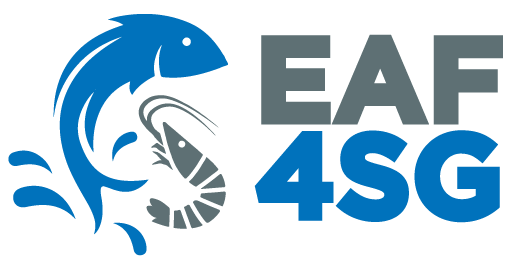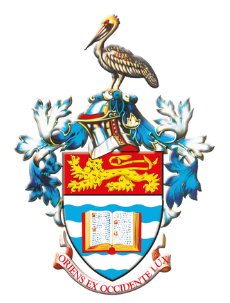The University of the West Indies St. Augustine, Trinidad and Tobago
The University of the West Indies St. Augustine, Trinidad and Tobago
A FAO-GEF Funded Project
Enhancing capacity for the adoption and implementation of Ecosystem Approach to Fisheries (EAF) in the shrimp and groundfish fisheries of the North Brazil Shelf Large Marine Ecosystem (EAF4SG).
The objective of the four year EAF4SG project, with Global Environment Facility (GEF) Trust Fund financing of US$1,776,484.00 is to advance adoption and implementation of the Ecosystem Approach to Fisheries (EAF) in the shrimp and groundfish fisheries in the North Brazil Shelf Large Marine Ecosystem (NBSLME), supporting implementation of the CLME+ Strategic Action Programme (SAP), specifically Strategy 6 on the development and implementation of EAF for the NBSLME shared shrimp and groundfish resources.
The participating countries are Guyana, Suriname, and Trinidad and Tobago, which are all highly dependent on the NBSLME shrimp and groundfish resources, some of which are shared, for their socio-economic development. However, many of the shrimp and groundfish stocks have been overfished, some to the point of collapse. These fisheries also threaten marine biodiversity and critical habitats through the incidental catch of non-target organisms and damage to benthic habitats.

Lack of adequate data and information for EAF at national and sub-regional levels;
Weak governance and management nationally and sub-regionally;
Weak incentives to support behavioural change towards adoption of EAF management in small-scale fisheries; and
Lack of knowledge and poor availability of information on EAF.
The Food and Agriculture Organization of the United Nations (FAO) is the project’s implementing agency and it is executed by the University of the West Indies (UWI), Faculty of Food and Agriculture (FFA). The fisheries authorities in the three participating countries act as the national executing partners and focal points for national level activities, in close collaboration with the national fisherfolk organisations as well as other fisheries-related stakeholders. At the sub-regional level, the project will work in close collaboration and coordination with regional fishery bodies, including Western Central Atlantic Fishery Commission (WECAFC) and Caribbean Regional Fisheries Mechanism (CRFM), to advance the development and adoption of harmonized management measures for the shared shrimp and groundfish resources of the NBSLME.
The longer-term global environmental goal to which the project seeks to contribute is a “healthy, resilient NBSLME with threats to the marine environment minimized and biodiversity protected and utilized sustainably contributing to the region’s ‘blue economy’, Sustainable Development Goals (SDG) targets and other international goals, and the implementation of the CLME+ SAP.”
Feel free to contact to ask questions or find out detailed specifics of FAO-GEF Funded Projects
The primary focus of the FFA is to produce the human resources needed for our Region to attain food and nutrition security. With its relevant research and wide range of undergraduate and graduate offerings in agriculture, agribusiness, food and nutrition, geography and related areas, the FFA is poised to make a significant contribution.
The University of the West Indies
St. Augustine, Trinidad and Tobago
Keep up to date with our latest communications and publications.
